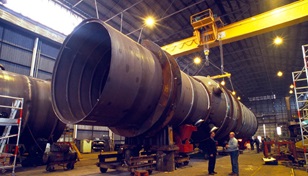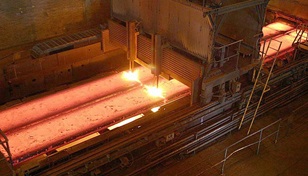Changes to the AS/NZS 3678 Standard (Structural Steel)
The AS/NZS 3678 Standard covering hot rolled plate products changed in 2011. BlueScope Steel manufactures plate to this Standard under the XLERPLATE® steel brand.
The changes to the Standard were designed to deliver two major benefits to users:
- Increase the ability of specifiers and purchasers to obtain product that is compliant to the Standard
- Provide specifiers better guidance and a wider range of grades from which to select the specification best suited to the fabrication process and the application
Assuring product compliance
BlueScope Steel is Australia’s only manufacturer of flat steel and has a long history of supplying quality products that meet or exceed Australian Standards at its IS0:9001 accredited manufacturing facilities.
Why is improved compliance important?
Improved compliance to the Standard gives the specifier and purchaser confidence that the material obtained will perform as intended in the design and use phases of the project. Improved compliance is brought about in AS/NZS 3678:2011 in a number of ways:
| Improving Compliance | Why? | BlueScope’s Practice |
|---|---|---|
| Ensuring testing is done at laboratories that are accredited to International Standards |
|
|
| Mandating a wider range of requirements on test certificates |
|
|
| Strengthening product conformity testing |
|
|
What options and benefits does the change to the Standard offer specifiers in terms of design?
| Options | Benefit | |
|---|---|---|
Increased range of impact testing options:
|
Designs for low temperature applications (L20 and L40) can be done using Australian Standards. This simplifies technical specifications and preparations of drawings. | |
| Steels with higher toughness levels for more critical applications can be specified. This provides greater confidence that the material will achieve the performance required in service. | ||
| Increased range of through-thickness testing options | Allows specifiers to utilise a higher level (Z35) of through-thickness testing than was available with the previous version of the Standard, for applications requiring welded joints with high restraint. | |
| Allows some level of through-thickness testing over a wider range of plate thicknesses by exploiting the “Z15” option that has been added to the Standard. | ||
| The ability to specify “fine-grained” steels | Useful for when fabrication requires hot forming or the component is to be normalized. A fine-grained structure assists the material to retain strength and toughness after hot forming or normalizing. | |
| More explicit warning regarding the potential hazards of reheating grades in this Standard above 620°C | Ensures that fabricators do not reduce the strength and/or toughness of the steel during fabrication. Where the application and/or fabrication process requires heating above 620°C, the purchaser should discuss this with the steel manufacturer. | |
Reducing Risk and Improving Confidence
The changes introduced in AS/NZS 3678:2011 increase the ability of specifiers and purchasers to obtain product that is compliant to the Standard at the same time as providing better guidance and a wider range of grades from which to select the specification best suited to the fabrication process and the application.
BlueScope’s XLERPLATE® steel offers the additional compliance guarantee of ACRS accreditation providing a valuable third level of assurance to specifiers and purchasers that XLERPLATE® steel is consistently and reliably manufactured to the Standard – that what we claim to be the properties of our AS/NZS 3678:2011 product are a match with the actual properties of the product.
Buyer Beware
BlueScope can guarantee that BlueScope manufactured steel made to the previous Standard, yet still within distribution supply chains, will comply with the new Standard. Changes to the Standard simply reflect what has been best practice at BlueScope Steel for several years.
Caution should be exercised if specifiers and purchasers are being offered new product to AS3678:1996 from other manufacturers, as these goods may not be compliant with the new AS/NZS Standard published in 2011.











